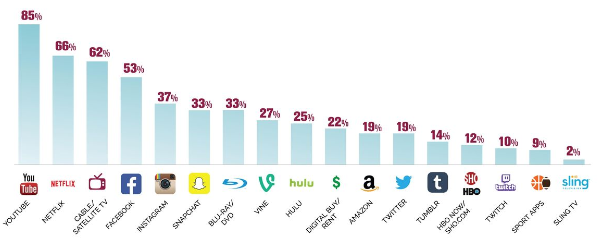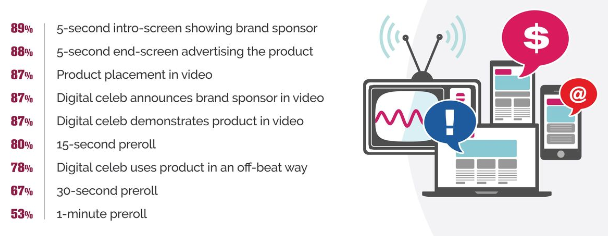A little while ago I posted a blog about how the evolution of Generation Z is affecting the way we as a society interact with online resources. In the blog I discuss what it means to be a part of “Gen Z” and how growing up alongside technology has created a unique upbringing for these young people.
Today I’m going to talk about Gen Z again. Mashable recently reported on a study conducted by Defy Media that explores how the world’s youngest generations consume digital video.

So… What Are They Watching?
Let’s first point out the significance of video in today’s world. The budgets for Video Marketing have never been higher and it’s not hard to see why. Simply put – people enjoy watching videos more than they like reading a post or looking at a picture.
In the case of Gen Z and the results of the study, we can see that an estimated 85% of respondents said YouTube is their number one go-to platform for video viewing. Netflix came in second with 66% and cable/satellite TV in third with 62%.

What Does This Mean?
Well, let’s see what the study tells us. Video services like YouTube and Netflix are rising while at the same time social media platforms such as Facebook, Instagram, and Snapchat are adjusting their algorithm’s to promote video content. This means that the use of video is rising, but it also means a couple other things as well.
Social Media is becoming less social.
According to the study, “Facebook, for example, is used mostly by younger users for video consumption. About 60% of those surveyed said they use the platform for social and video, versus the 40% who use it for social purposes alone.”
It’s not just the cost of cable that’s the problem.
It’s easy to say from the data that the reason cable television has been on a decline is because people are tired of paying for a cable package, however, the study found that this isn’t necessarily true. About 38% of those surveyed said they did not have a cable/satellite box. The study explains:
“About 40% say there are less expensive options, while 24% are just not interested in the content TV offers.”
Ads aren’t all that bad after all.
Almost everyone engaging with video today knows and expects to see advertisements. These ads come in many different shapes and sizes, but no matter where they come from, the message is relatively the same.
“Part of this is because these consumers are ‘a lot more savvy’ and how their favorite digital stars make money (i.e. ads),” the report explains. “One person surveyed said he turned the ad blocker off for his favorite Twitch creator because he wanted to support the star and ‘not take money out of their pocket.”

What’s Next?
The answer to the question of how the youth will consume video is evident through the results of the study. Gen Z has grown up hand-in-hand with today’s digital technology and they rely on the services that older generations might consider strange.
Understanding where and how potential customers are consuming information is vital information when thinking about marketing. And now that Gen Z is approaching the age to be considered a valuable purchasing demographic, businesses need to be updated on the message these young customers are willing to listen to.